Fiddling With Rhythm Loops
Here’s a cool way for you to improve your timing and practice tricky rhythms. We will “extract the rhythm” from a melodic phrase. Then we’ll practice the rhythm separately on:
- Open strings
- Two-note intervals
- Scales
- Basic/extract practice loops
I’ve been doing this with complex rhythms from Round Peak fiddle tunes (Appalachian/Old-time). It’s been challenging! I find I’m often working at my edge.
This is a good example of how a practice strategy can continue to serve you throughout your fiddle journey.
Unlock all the content on this page for free!
Full content for this lesson (all learning chunks, video loops, sheet music, audio and supplemental video) is available with a paid subscription. But you can use it NOW with a Free Two-week Trial Subscription.
Sign up here 🎻
The basic process
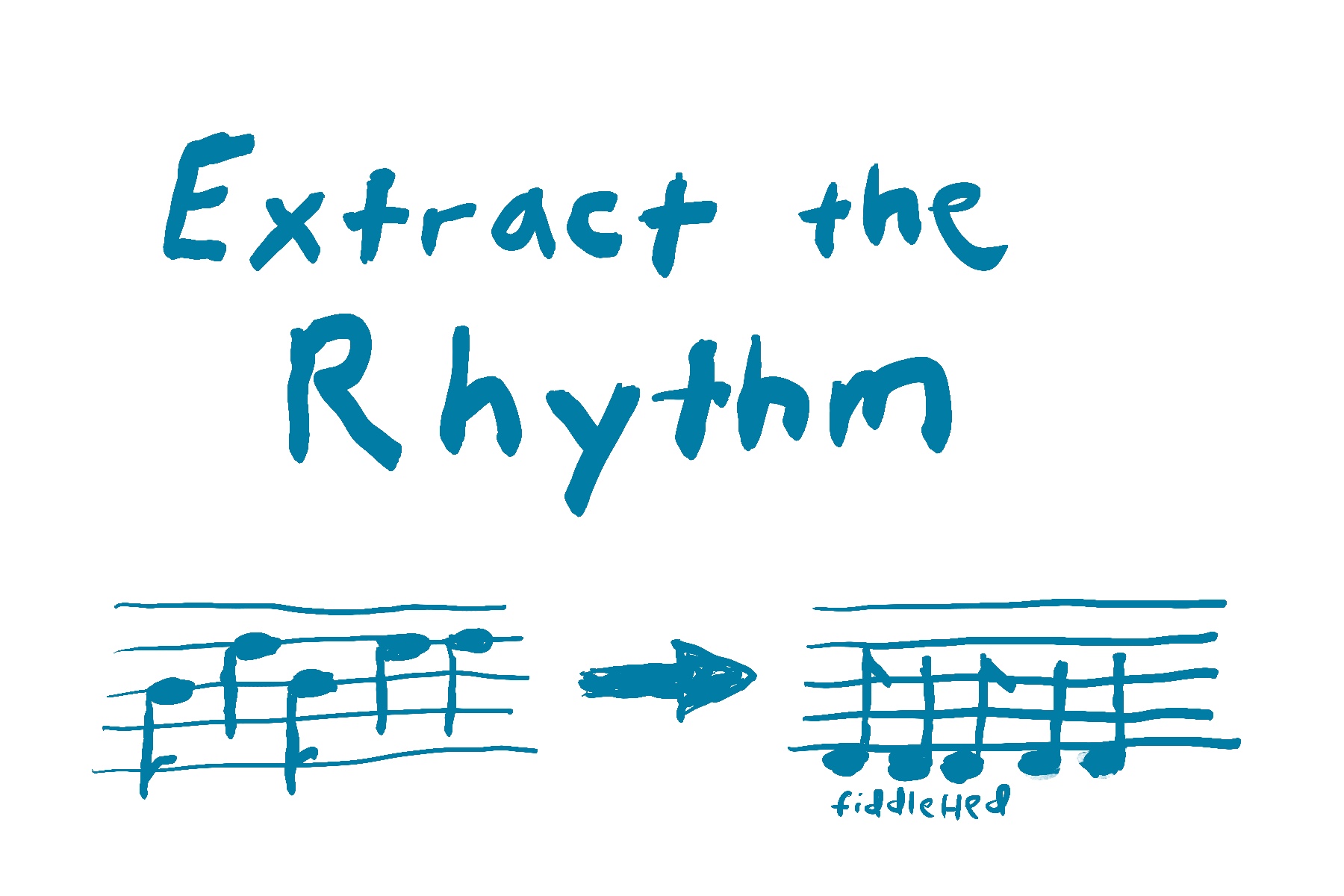
We’ll do this with a few examples. Play the first bar of Shooting Creek.
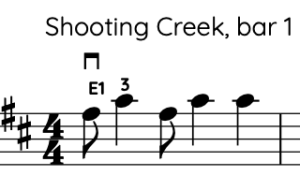
Notice the rhythmic value of each successive note:
eighth-quarter-eighth-quarter-quarter
Let’s extract this rhythm to the open E string:
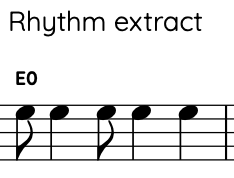
Once you do that, loop on it until you’ve mastered it.
Do this for different sized loops. Here’s an example from Cooley’s Reel , B Part, First Quarter

- E0-A1-[1-1-1]
- E0-A1-[1-1-1]-E0-A1-EL2-1
- E0-A1-[1-1-1]-E0-A1-EL2-1-0-A1-[1-1-1]–EL2-0-A3-1
Going deeper
We can go deeper with this. Practice that rhythm extract on a two-note interval:

Once you get that to flow, practice the rhythm extract on each note of the D Major scale (see notation further down the page).
Now let’s take a more challenging step. Alternate between the basic version of the phrase and its extract:
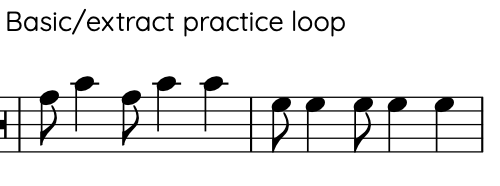
By the time you do all this, you’ll be pretty good at this rhythm! Plus, you’ll more quickly get it the next time you see it. Furthermore, the more you do the process, the more confidence you’ll have in your ability to figure out rhythms.
Further learning and practice
This lesson is part of a series called “Power Practice Habits” 💪🏽. I’ve started to take notes on all the little unconscious things I do when I practice. I’m trying to translate these strategies so that you and other fiddlers can also use them too.
Many of these strategies are based on the idea of a practice loop; alternating between something basic and something more challenging (or at least different).
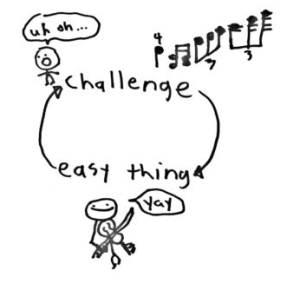
For example, practice loops can be used to learn and practice note-reading.
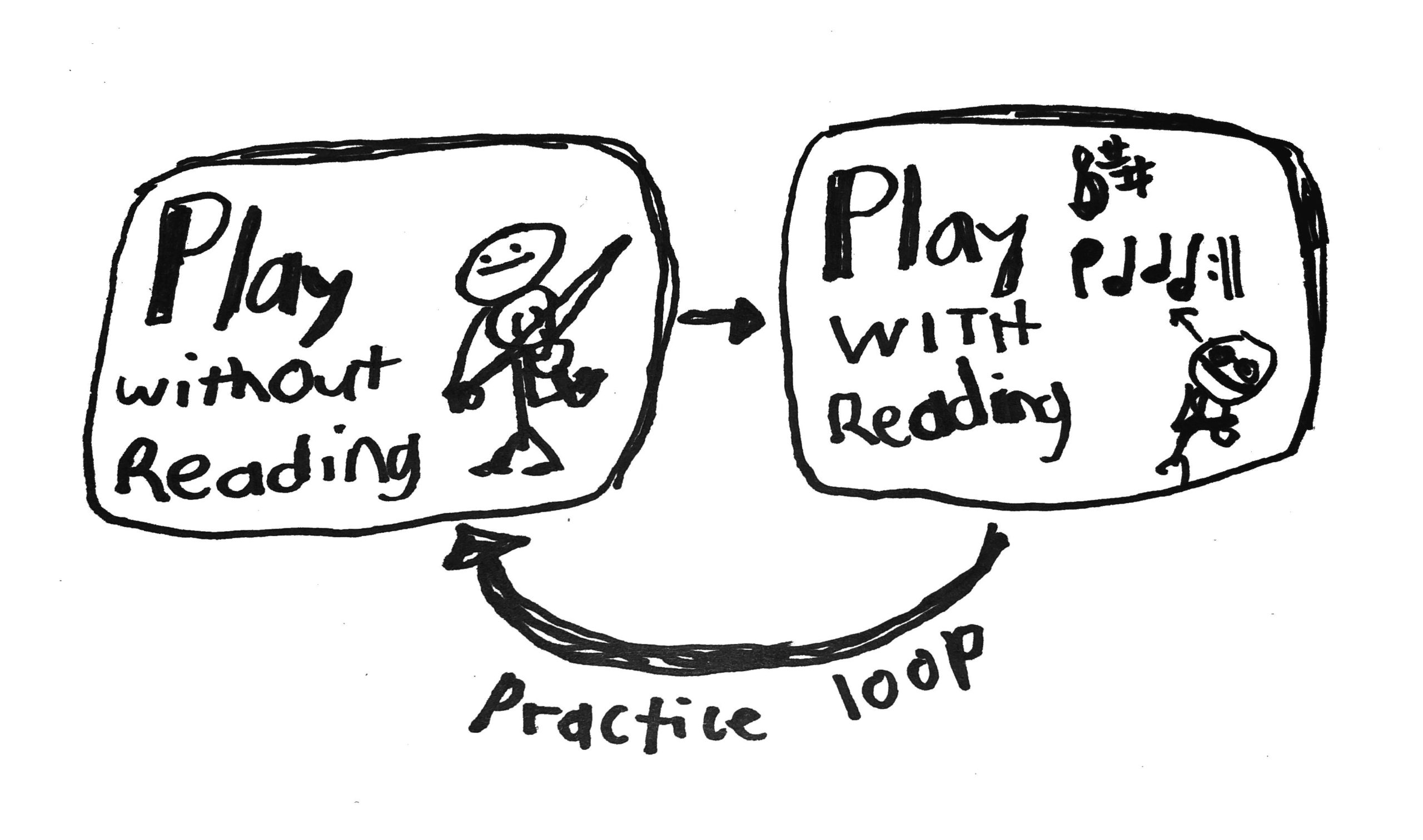
Learn more about this in the Note-reading for Fiddlers course. And you can find more Power Practice Tips in the How To Practice Fiddling course. Here are a few related lessons to check out:
- Practice Loops
- Alternate Between A Tune And Its Scale
- Alternate Between Listening And Playing
- Alternate between singing and playing
What’s going on here?
You are separating the hands. When you play the rhythm extract, you’re putting your full attention on the right hand and timing. If you need to separately practice the left-hand fingering, you could slowly play the notes without any rhythm at all. Or you could slowly pluck them.
Creating the extract can be challenging. If it is, then use the micro-practice approach and start with a smaller piece. Start by doing this practice on easier tunes, or at least easier phrases from tunes you’re working on.
Using this for string crossing patterns
Let’s use the same process to practice string crossing. Play the first quarter of Swallowtail Jig:
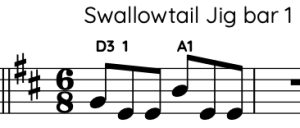
Notice that the first three notes are on the D string, the fourth is on the A string, the fifth and sixth are on the D string. So this would be our rhythm extract:
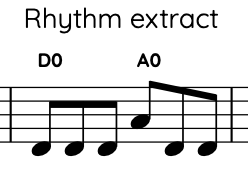
This allows you to master that difficult string crossing. Place your left hand in beginner position (on the fiddle) and play it at different speeds.
Now let’s do a basic/extract practice loop:
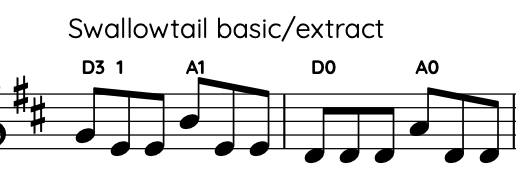
We can extend the practice in some fun ways. Take the rhythm extract and start it on open G:
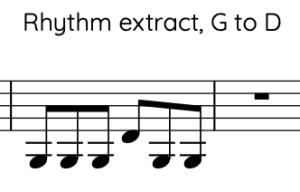
Then start it on open A:
You can add fingerings to this to create pedal patterns. See the sheet music for more detail.
Using this on tricky bowing patterns
This is also a great way to figure out slur patterns. I’m trying to learn and practice the intricate Round Peak bowing patterns. So I’m extracting the rhythms created by the slur patterns. See the example for Breaking Up Christmas in the supplementary video and sheet music below.
This practice is helping me to learn and remember the slur pattern. Another benefit of doing this is that I start to see that these tunes have certain common bowings. I’ll get into this in future lessons on bowing.
In summation
If you do this process on one tricky rhythm for a tune, it may unlock the entire tune. Don’t feel the need to do this for every part of a tune.
Furthermore, all practice strategies are just a way for you to get better at music. The point is, if this gets frustrating, return to just playing the tune as well as you can.
I’m truly excited about this practice of extracting rhythms. For my own practice, I think it will help me to crack the code of the music I’m working on. Then I can teach you better. But now you have the essential tool for discovering the underlying rhythms of a tune.
Further practice – supplementary video
In the video below, I’ll demonstrate how to extract rhythms on other tunes from the FiddleHed course.
Sheet Music
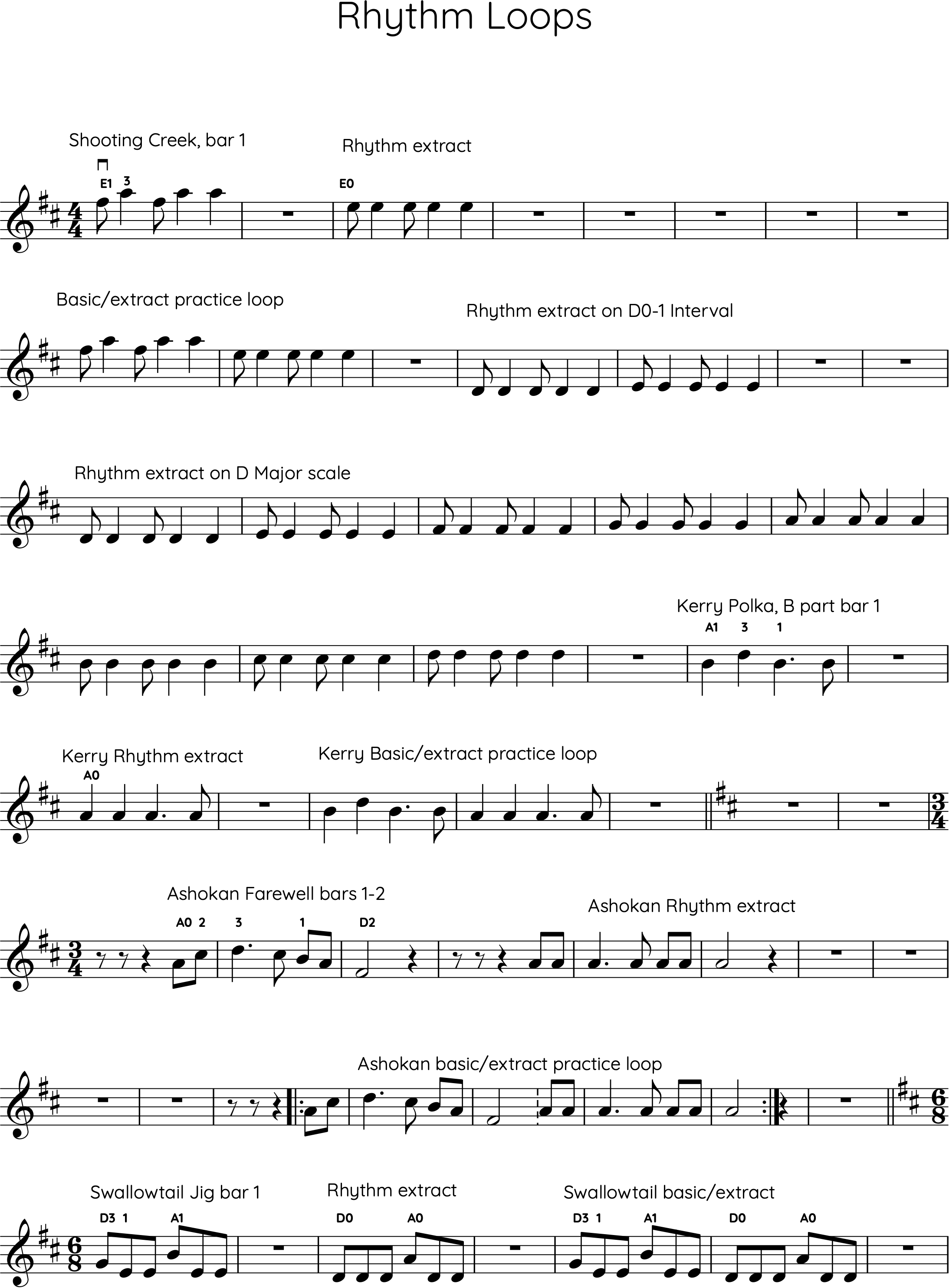
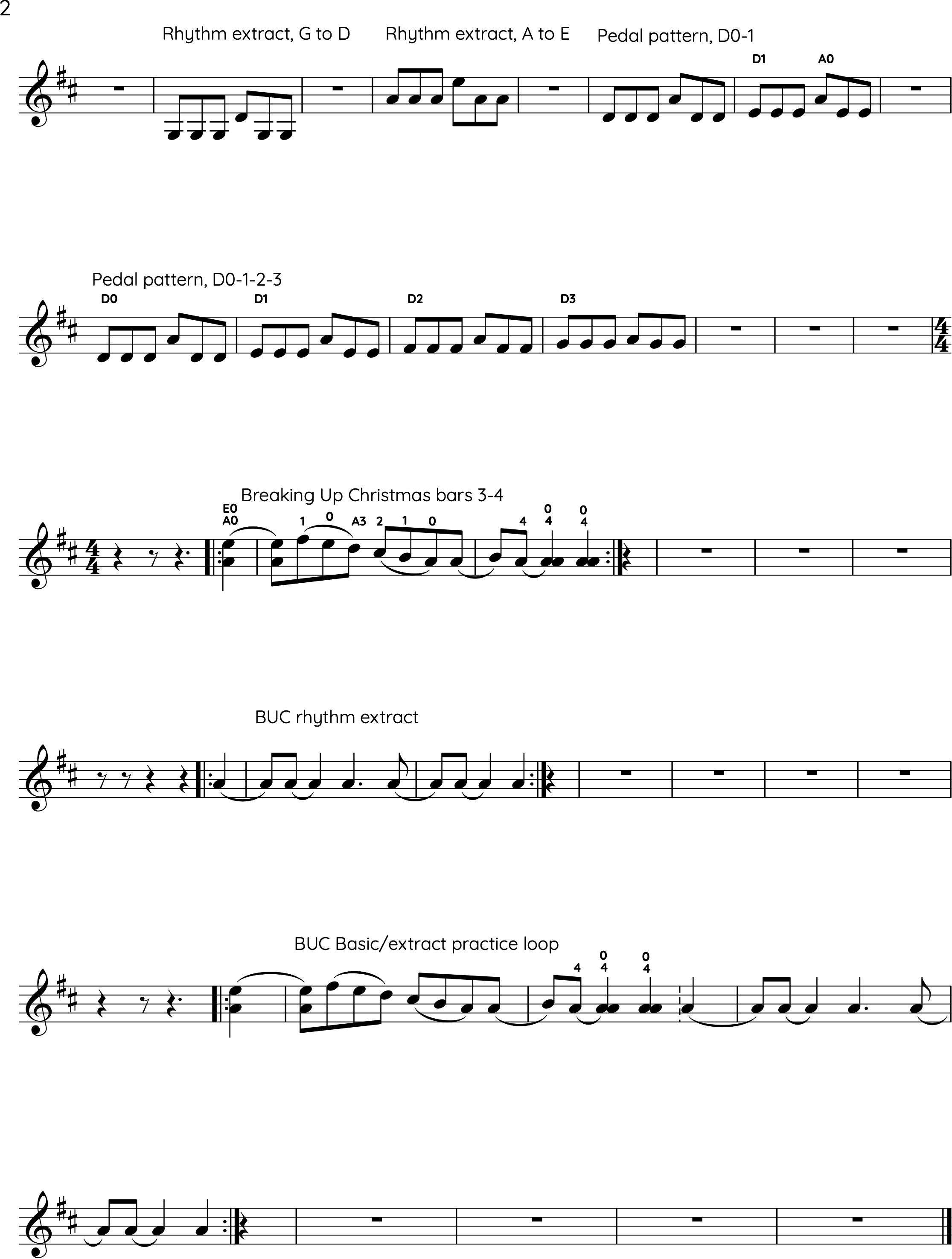
Two ways I can help you level up your fiddling
- Sign up for the FiddleHed newsletter below.
- Sign up for the Free Two-week Trial. You’ll get full access to all courses and group lessons. Plus, I’ll send you some free lessons tailored to your current skill level.
Thanks for being here 🙏
Return to Fiddle Questions >>
Leave a Reply
You must be logged in to post a comment.


You’re puttin down some cool stuff Jason, I love it. I find myself practicing more technique and fundamentals than songs. However, when I work on a song the bowing comes easier.